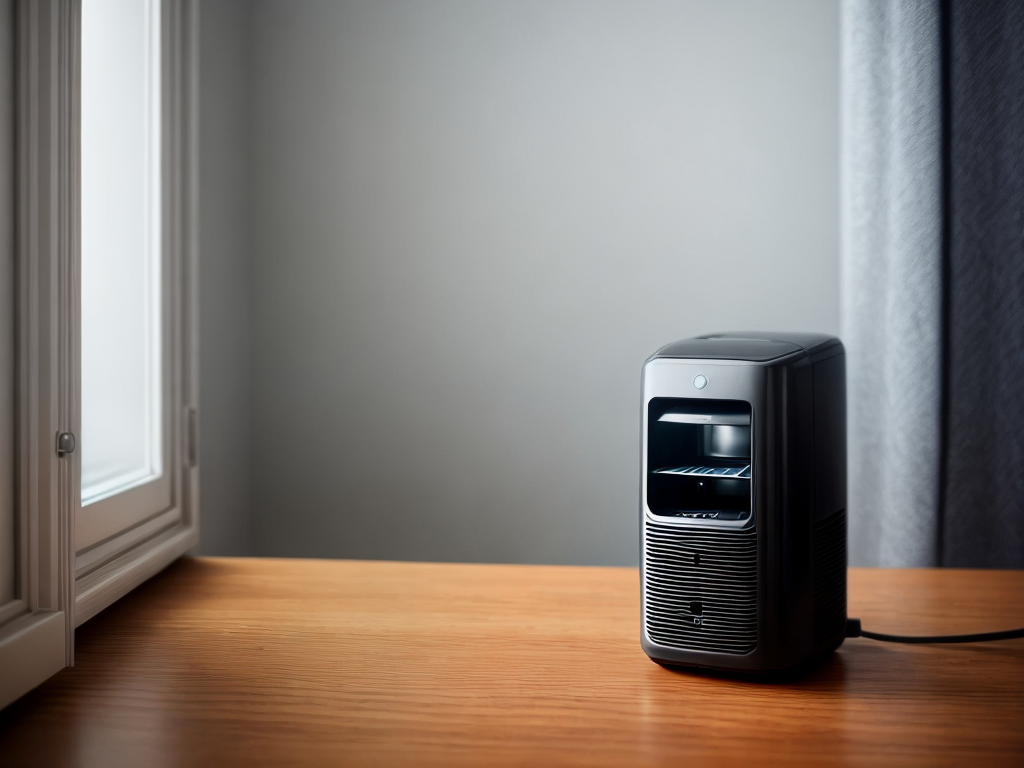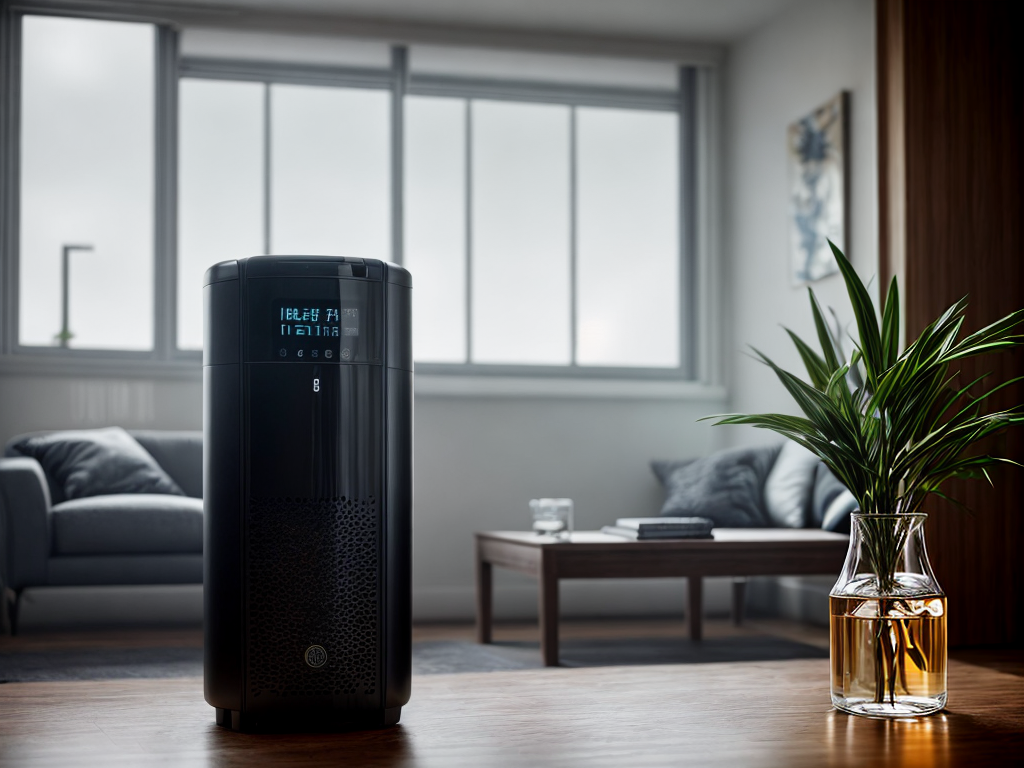
Did you know that approximately 50 million people in the United States suffer from allergies? As someone who has dealt with allergies for years, I understand the struggle and the need for relief. That’s why I decided to delve into the world of dehumidifiers, as they have been known to provide significant relief for allergy sufferers. But with so many options out there, how do you choose the right dehumidifier for your needs? In this guide, we will explore the key factors to consider when buying a dehumidifier specifically tailored to alleviate allergies. So, let’s dive in and find the perfect dehumidifier to help you breathe easier.
Types of Dehumidifiers
There are several types of dehumidifiers available on the market today. For those looking to control the humidity in a specific area, portable dehumidifiers are a popular choice. These compact units can be easily moved from room to room and are ideal for smaller spaces such as bedrooms or offices. On the other hand, if you want to dehumidify your entire home, a whole house dehumidifier is the way to go. These units are installed directly into your HVAC system and work to control the humidity levels throughout your entire house.
When it comes to the technology used in dehumidifiers, there are two main types to consider: desiccant and refrigerant. Desiccant dehumidifiers use a moisture-absorbing material to remove excess humidity from the air. These units are often quieter and more energy-efficient than refrigerant dehumidifiers, making them a great choice for those who value control and efficiency.
Refrigerant dehumidifiers, on the other hand, use a cooling system to remove moisture from the air. These units are typically more powerful and can extract larger amounts of moisture in a shorter period of time. They are a popular choice for larger spaces or areas with high levels of humidity.
Choosing the Right Size
When choosing a dehumidifier, it is important to consider the size of the room you want to dehumidify. The size of the room will determine the capacity of the dehumidifier needed to effectively remove moisture. You want to make sure that the dehumidifier you choose has a moisture removal capacity that matches the needs of your room.
Room Size Considerations
To choose the right size dehumidifier for your room, consider the square footage and humidity levels in the space. Here are four things to keep in mind:
-
Room size limitations: Make sure to check the specifications of the dehumidifier to ensure it can effectively cover your room size. A dehumidifier that is too small may not be able to adequately remove excess moisture.
-
Benefits of a larger dehumidifier: While it may be tempting to opt for a smaller dehumidifier to save space, a larger unit can offer several benefits. It can remove moisture more quickly, cover a larger area, and require less frequent emptying of the water tank.
-
Humidity levels: Consider the humidity levels in your room. If you live in an extremely humid area or have high humidity levels in your home, you may need a more powerful dehumidifier to effectively reduce moisture.
-
Additional factors: Take into account any additional factors that may contribute to excess moisture, such as the number of occupants, ventilation, and sources of moisture in the room.
Moisture Removal Capacity
Choosing the right size dehumidifier involves considering its moisture removal capacity. When it comes to dehumidifier performance and moisture control, it’s important to select a unit that can effectively remove excess moisture from your space. The moisture removal capacity of a dehumidifier is measured in pints per day (PPD) and indicates the maximum amount of moisture it can extract in a 24-hour period. To help you make an informed decision, here is a table outlining the recommended moisture removal capacity based on room size:
| Room Size | Moisture Removal Capacity |
|---|---|
| Small (up to 500 sq. ft.) | 25-34 PPD |
| Medium (500-1,000 sq. ft.) | 35-49 PPD |
| Large (1,000-2,500 sq. ft.) | 50-74 PPD |
Considerations for Allergy Sufferers
When it comes to choosing a dehumidifier for allergy sufferers, there are a few important considerations to keep in mind. First, look for models that offer allergen filtration options to help remove dust, pollen, and other irritants from the air. Additionally, it’s crucial to maintain optimal humidity levels in your home to prevent the growth of mold and mildew, which can trigger allergies. Lastly, consider the noise levels of the dehumidifier, especially if you plan to use it in a bedroom while sleeping.
Allergen Filtration Options
Using an allergen filtration option can greatly benefit allergy sufferers by reducing the presence of allergens in the air. When considering which allergen filtration option to choose for your dehumidifier, keep the following factors in mind:
-
Purifying Technology: Look for dehumidifiers that utilize advanced purifying technology. These technologies, such as activated carbon filters or ultraviolet germicidal irradiation, can help remove a wide range of allergens from the air, including dust mites, pet dander, and mold spores.
-
HEPA Filters: High-Efficiency Particulate Air (HEPA) filters are highly effective at capturing microscopic allergens, such as pollen and dust particles. Look for dehumidifiers that feature HEPA filters, as they can significantly improve indoor air quality and provide relief from allergy symptoms.
-
Maintenance and Replacement: Consider the ease of maintenance and replacement for the allergen filtration option. Look for dehumidifiers that allow for easy access to the filters and have clear instructions for replacement.
-
Filter Lifespan: Check the lifespan of the filters. Some filters may need to be replaced more frequently than others, so choose an option that suits your needs and budget.
Optimal Humidity Levels
After considering the allergen filtration options for your dehumidifier, it is important to understand the optimal humidity levels that can benefit allergy sufferers. Maintaining the right level of humidity in your home can significantly improve your indoor air quality and reduce allergy symptoms. The ideal humidity range for allergy sufferers is between 30% and 50%. To help you visualize the impact of humidity levels on your health, here’s a table that shows the health benefits associated with different humidity ranges:
| Humidity Range | Health Benefits |
|---|---|
| Below 30% | Dry air can irritate the respiratory system and worsen allergy symptoms. |
| 30% to 50% | Optimal range for allergy sufferers, promoting easier breathing and reducing the growth of mold and dust mites. |
| Above 50% | High humidity can create a breeding ground for mold, dust mites, and other allergens. |
Noise Levels and Sleep
Getting a good night’s sleep is essential for allergy sufferers, and one important consideration is the noise levels of a dehumidifier. As someone who values control over my sleeping environment, I understand the importance of minimizing disruptions. Here are four things to consider when it comes to the noise levels of a dehumidifier:
- Decibel Levels: Look for dehumidifiers with low decibel levels, ideally below 50dB, to ensure a quiet operation during sleep.
- Soundproofing Solutions: Consider using soundproofing materials such as acoustic panels or curtains to reduce any noise transmitted from the dehumidifier.
- Placement: Opt for a dehumidifier that can be placed further away from your sleeping area to minimize any noise disturbance.
- White Noise Machines: Alternatively, invest in a white noise machine to mask any background noise, including that of the dehumidifier.
Energy Efficiency Ratings
To ensure optimal energy usage, it is important to consider the energy efficiency ratings when purchasing a dehumidifier. Energy efficiency benefits not only the environment but also your wallet. By choosing a dehumidifier with a high energy efficiency rating, you can save on utility costs in the long run.
Energy efficiency ratings are typically represented by the Energy Star label. This label indicates that the dehumidifier meets or exceeds the energy efficiency standards set by the Environmental Protection Agency (EPA). When comparing dehumidifiers, look for the Energy Star label to ensure that you are choosing a model that will provide cost savings.
A dehumidifier with a high energy efficiency rating will consume less electricity while effectively removing moisture from the air. This means that it will be able to run more efficiently, reducing your energy consumption and ultimately lowering your energy bills. Additionally, an energy-efficient dehumidifier will have a smaller carbon footprint, contributing to a greener environment.
When considering energy efficiency ratings, it is important to balance the upfront cost of the dehumidifier with the potential cost savings over time. While a more energy-efficient dehumidifier may have a higher purchase price, it can provide significant savings in the long run, making it a worthwhile investment. So, be sure to consider the energy efficiency ratings when making your dehumidifier purchase to maximize your cost savings and minimize your environmental impact.
Additional Features to Look for
When choosing a dehumidifier, it is important to look for additional features that can enhance its functionality and convenience. Here are four key features to consider:
-
Smart technology: Look for a dehumidifier that offers smart technology capabilities. This feature allows you to control and monitor your dehumidifier remotely through a smartphone app. With smart technology, you can adjust the settings, check the humidity levels, and receive alerts and notifications, all from the comfort of your couch or even when you’re away from home.
-
Automatic shut off: This feature is a must-have for those who desire control and peace of mind. An automatic shut off feature ensures that the dehumidifier turns off when the desired humidity level is reached or when the water tank is full. This not only prevents over-dehumidification but also protects against potential water damage or overflow.
-
Timer function: A timer function allows you to set specific time intervals for your dehumidifier to operate. This feature is particularly useful if you want to schedule the dehumidifier to run only during specific hours, such as at night or when you’re not at home. It helps you save energy and ensures that the dehumidifier operates efficiently.
-
Filter indicator: To maintain optimal air quality, it is essential to regularly clean or replace the filters in your dehumidifier. Look for a dehumidifier that includes a filter indicator feature. This feature alerts you when it’s time to clean or replace the filter, ensuring that your dehumidifier continues to function effectively and efficiently.
Maintenance and Upkeep Tips
Regular maintenance and upkeep are essential for ensuring the longevity and optimal performance of your dehumidifier. By following a few simple cleaning methods, you can prevent mold growth and keep your dehumidifier running smoothly.
Firstly, it is important to regularly clean the water collection bucket. Empty it frequently to prevent the growth of bacteria and mold. Wipe it down with a mild detergent and warm water to ensure it is thoroughly clean. Additionally, check the filter regularly and clean or replace it as needed. A dirty filter can hinder the efficiency of your dehumidifier and allow mold spores to circulate in the air.
In order to prevent mold growth, it is crucial to keep the area surrounding the dehumidifier clean and dry. Regularly dust and vacuum the room to remove any potential allergens or mold spores. Avoid placing the dehumidifier in a damp or humid environment, as this can promote mold growth. Consider using a hygrometer to monitor the humidity levels in your home, and adjust the settings on your dehumidifier accordingly.
Best Dehumidifiers for Allergy Sufferers
Now let’s explore the top dehumidifiers that are specifically designed for allergy sufferers. These dehumidifiers not only remove excess moisture from the air, but also offer additional features that can help improve air quality and alleviate allergy symptoms. Here are the top four dehumidifiers that allergy sufferers should consider:
-
Air purifier integration: Some dehumidifiers come with built-in air purifiers, allowing you to dehumidify and purify the air at the same time. This combination can be particularly beneficial for allergy sufferers, as it helps remove allergens such as dust, pollen, and pet dander from the air.
-
Dehumidifier accessories: Look for dehumidifiers that offer accessories such as HEPA filters or activated carbon filters. These accessories can enhance the air purification capabilities of the dehumidifier, trapping even more allergens and pollutants.
-
Quiet operation: Allergy sufferers often need a peaceful environment to rest and recover. Choose a dehumidifier that operates quietly, so it doesn’t disturb your sleep or daily activities.
-
Smart features: Some dehumidifiers come with smart features like mobile app integration and voice control. These features allow you to control and monitor your dehumidifier remotely, giving you more control over your indoor environment.








